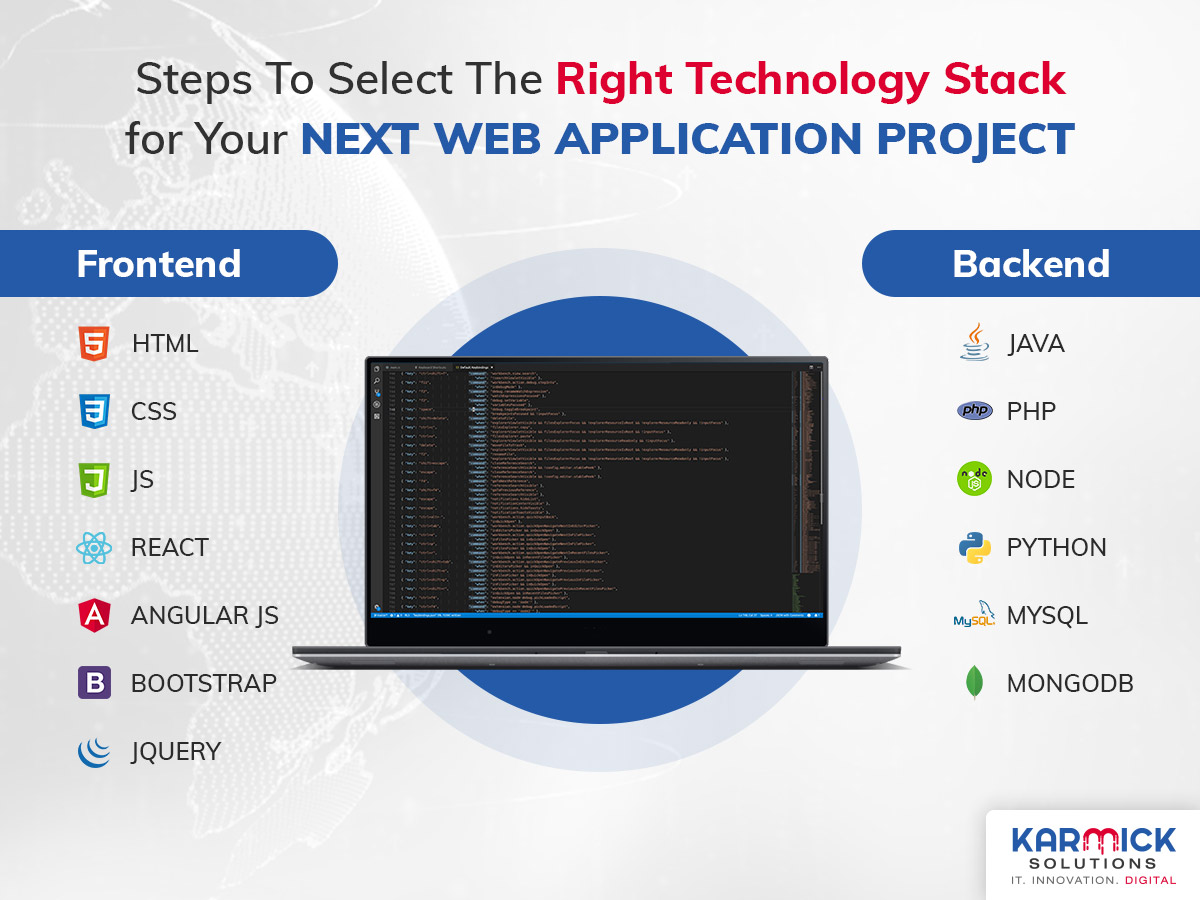
Choosing the right technology stack is critical for the development of your next web application. Yes, like in any project, the web application project also involves a lot of planning. Making a wrong selection can negatively impact the performance and scalability of the application, including an unavoidable cost escalation! So, you have to follow a few steps to select the right technology stack, but before that, it is essential to know what exactly is a technology stack.
Technology stack
A technology stack is not a single entity. In fact, it refers to all the frameworks, programming languages, and software products that are used to build the application. Here, it is vital to understand that a web application has two sides-client-side or frontend and server-side or the backend. For example, while the client-side deals with everything related to the way the app content is displayed, styled, or interacts with the user, the server-side deals with everything that is not visible to the user. For example, the database, server, framework, or the programming language used for coding.
So, now that you are familiar with the term technology stack, let’s discover the steps to find the best one for your next web application.
Step 1. Evaluate the type of web application
First, have a knowledge of the type of web app that you are going to build because if the size is small and the app is without any complexity, you can conveniently use Readymag, Wix, Webflow, Weebly, or Squarespace. However, if you are planning to build a medium-sized app that is rich in features, you must consider a complex technology stack. Remember to choose a stack that includes frameworks like Angular, Vu.js, Laravel, React, NodeJS, React.JS, or Django.
Step 2-Find out whether you need scalability
Do you need a static web app or a dynamic app? If it is a dynamic one, it must be scalable. So, go for a technology stack that can handle the increase in load. Take into account both horizontal and vertical growth so that the technology stack can take care of both the user growth and the addition of new features as per the demand of the user.
Step 3-Consider you time-to-market
If you are a start-up, your time-to-market (TTM) might be quite critical for you. So, the technology stack that offers out-of-the-box solutions and integration with 3rd party services might prove the best to reduce your TTM. For example, both Python and Django helps to build a market-ready web app. You can also save a lot of time in development by going for Ruby on Rails framework as it offers access to a set of libraries.
Step 4-Estimate the development cost
Do you know if you choose an advanced technology stack, the development cost of your web application will literally shot up? So, once you have completed all the three steps, do not forget to have an accurate estimation of your budget.
Step 5-Give importance to security
At the end of the day, what you want to develop must be a secure web application. Also, data breaches are no rampant. So, the right technology stack will be the one that will help you to create an application with robust security.
At present, the MEAN stack comprising of MongoDB, Express. js, AngularJS, and Node. Js is one of the most widely used technology stacks for web application development. Another trending stack is LAMP (Linux, Apache, MySQL, and PHP). However, whether you choose to follow the above steps or not, it is vital to remember that technology stack is not the sole thing that matters to build a successful web application. You also need to have the right design to deliver the best user experience.
However, if you are an entrepreneur and have an app idea, you can forego all the above steps. The best course of action will be instead to contact a web application development company to convert your app idea into a powerful web app.